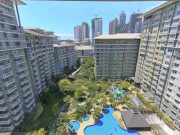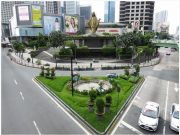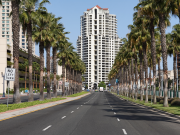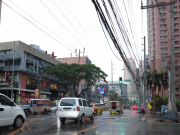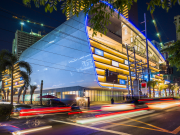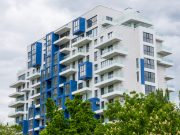Metro Manila, often synonymous with towering skyscrapers and high-end lifestyles, has carved a niche as the financial center of the Philippines. The common belief is that it’s expensive, but Metro Manila has affordable options. Think the metro is only for the wealthy? Think again. Accessible homes and investment properties await. Find your affordable dream home in this exciting city by exploring the hidden gems it offers.
The Metro: More Than Just Tall Buildings
Most people picture fancy buildings when they think of Metro Manila, right? But it’s a mix of different places! It is more than just towering skyscrapers and luxury condos. There are 16 cities and one town, all with distinct feels and prices. You’ve got the super busy areas like Makati and Bonifacio Global City, and then you have the quieter residential spots like Parañaque, Las Piñas, and Muntinlupa. Metro Manila truly has a place for every lifestyle.
Many things determine how much a property costs in Metro Manila. Here are some key factors:
- Location: Places near offices, transportation, and shops are usually more expensive.
- Size: Bigger homes cost more.
- Building Age: Newer buildings with modern features are pricier.
- Amenities: Extras like pools and gyms add to the cost.
- Economy: The country’s economy, interest rates, and inflation play a role.
- Supply and Demand: When many people want to buy, prices increase.
- Schools: Homes near good schools cost more.
- Safety: Safe neighborhoods are more expensive.
- Zoning: How the land can be used affects its value.
- Trends: What’s popular in real estate changes prices.
Affordable Property Options in the Metro
You might think Metro Manila is only for the wealthy, with its high-rise offices and luxury apartments. However, affordable housing is available. If you take your time and explore, you’ll find plenty of different homes at prices that work for you.
1. Condominiums
If you want to live in Metro Manila, condos are a great option. There’s a huge selection, from budget-friendly to high-end. Prices vary based on location, building age, amenities, and unit size. Explore older buildings or areas outside the center, though you might have to compromise on some modern conveniences for more affordable choices.
2. House and Lot
Owning a house and lot in Metro Manila is a luxury for many. However, there are still opportunities for those determined to have their property. These are typically found on the outskirts of Metro Manila or in neighboring districts. Given the premium on land in the metro, house and lot options generally have a higher price tag than other areas.
3. Land Properties
Owning a piece of land in the Metro is a long-term investment. While it might be challenging to find large plots within an urban landscape, there are still opportunities to acquire smaller lots or land shares in neighboring areas. These properties offer potential for future development or serve as a steady source of income through leasing or renting.
Tips for Finding Affordable Properties in Metro Manila
Uncovering affordable properties in the Metro requires a strategic approach. Diligent research is paramount. Explore different neighborhoods within the cities to understand price fluctuations and identify areas that align with your budget and lifestyle. Online platforms and real estate websites are invaluable tools for comparing listings and gaining market insights.
A. Location
Location plays a crucial role in property pricing. While prime spots in Metro Manila often demand a premium, exploring slightly less central areas can yield surprising affordability. Prioritize neighborhoods with convenient access to public transportation, essential amenities, and a reasonable commute to your workplace.
B. Timing
Timing is another factor to consider. Market conditions fluctuate, influencing property values. Staying informed about market trends can help you capitalize on opportunities. For instance, off-peak seasons or economic downturns might present more favorable pricing.
C. Negotiation
Negotiation is an art form that can significantly impact your bottom line. Many sellers are open to reasonable offers, especially in a buyer’s market. Thoroughly research comparable properties to strengthen your negotiating position. Remember to consider additional costs beyond the property price, such as association dues, utilities, and potential renovations. Factor these into your budget to avoid financial surprises.
By combining these strategies, you can increase your chances of finding an affordable property in the Metro that meets your needs and expectations.
Financial Considerations
Purchasing or renting a property in Metro Manila involves careful financial planning. Creating a realistic budget is essential to avoid financial strain. Consider all potential costs, including monthly rent or mortgage payments, utilities, internet, and transportation. Allocate funds for emergency expenses and savings to build a financial cushion.
For those considering buying a property, exploring financing options is crucial. Mortgage loans are commonly used to finance property purchases. Research different lenders, interest rates, and loan terms to find the best option that suits your financial situation. Additionally, consider other financing avenues like personal savings, loans from family or friends, or even property investment partnerships.
Investing in Metro real estate can be a lucrative venture due to the city’s strong property appreciation potential. However, it’s essential to conduct thorough market research and consider factors such as location, property type, and economic trends. Consult with real estate experts to gain insights into potential returns on investment.
Remember, while the Metro offers attractive investment opportunities, it’s crucial to weigh the potential returns against the initial investment and ongoing expenses.
Lifestyle Considerations
Finding an affordable property in the Metro often involves making trade-offs between budget and desired lifestyle. It’s essential to prioritize your needs and preferences to ensure the property aligns with your lifestyle.
- Proximity. Consider factors like proximity to your workplace, schools, shopping centers, and recreational facilities. While location is a significant determinant of property prices, evaluating the importance of these amenities to your daily life is crucial.
- Transportation. Commuting plays a vital role in urban living. Assess the transportation options available in the area, such as public transportation, ride-sharing services, or private vehicles. Consider the traffic situation and the time it takes to commute to your workplace or other destinations.
- Convenience. Amenities within the property or the surrounding neighborhood can significantly enhance your living experience. Consider factors like access to gyms, swimming pools, parks, and other recreational facilities. While these amenities often come with additional costs, they can contribute to a higher quality of life.
By carefully considering these lifestyle factors, you can find an affordable property in the Metro that meets your needs and complements your desired lifestyle.
Conclusion
The Metro, often perceived as a city for the affluent, offers a surprising range of affordable property options for those willing to explore beyond the obvious. By understanding the city’s diverse neighborhoods, considering different property types, and employing effective search strategies, you can discover budget-friendly homes or investment opportunities.
Remember to create a realistic budget, explore financing options, and prioritize your lifestyle needs when making decisions. With careful planning and research, you can unlock the potential of the Metro’s property market and find your ideal affordable home or investment.
Ready to embark on your Metro property journey? Contact a trusted real estate agent like HousingInteractive, which specializes in affordable Metro properties. They can provide personalized guidance, access to exclusive listings, and expert negotiation skills.
Additional Resources
For more information and inspiration, check out these helpful resources:
- Emerging Property Investment Opportunities in the Metro
- Luxury Living: The Most Prestigious Residential Developments in Metro Manila
- Metro Manila vs. Provincial Cities: Where to Invest in Real Estate?
- Beyond Metro Manila: The Rise of Thriving Townships and Mixed-Use Estates in the Philippines
By combining your research with expert advice, you’ll be well-equipped to find the perfect affordable property in the Metro.
Common Questions About Affordable Properties in the Metro
Q: Are there affordable properties in the Metro?
While the Metro is often associated with high-end living, it does offer a range of property options to suit different budgets. With careful research and planning, you can discover affordable condos, shared living spaces, and even house-and-lot alternatives.
Q: What are the best neighborhoods in the Metro for finding affordable properties?
While the central business district is renowned for luxury properties, exploring neighborhoods like Poblacion, Bel-Air Village, and Urdaneta Village can reveal more budget-friendly options. These areas often provide a balance of accessibility and affordability.
Q: What are the average prices for condos in the Metro?
Condo prices in the Metro can fluctuate significantly based on factors such as location, size, building age, and amenities. To get a precise estimate, it’s recommended to research specific buildings and neighborhoods. Online property listings and real estate agents can provide detailed pricing information.
Q: Are there any government programs to help with affordable housing in the Metro?
While there might not be exclusive programs dedicated to the Metro, it’s worth exploring options offered by the National Housing Authority (NHA), Pag-Ibig, Housing Loan, or local government offices. These agencies often provide subsidies, low-interest loans, or housing projects aimed at assisting low- to middle-income earners.
Q: What are the transportation options in the Metro?
The Metro boasts a robust public transportation system, including buses, trains (MRT and LRT), and jeepneys. Ride-sharing services are also widely available for added convenience. The city’s well-connected infrastructure ensures easy mobility for residents and commuters.
Glossary
- Condominium (condo): A type of property ownership where individuals own their unit within a building but share ownership of common areas.
- House and lot: A property that includes a dwelling and a parcel of land.
- Shared living spaces: Living arrangements where individuals share common areas, such as kitchens, living rooms, and sometimes bedrooms, to reduce living costs.
- Mortgage: A loan obtained to purchase a property, with the property itself serving as collateral.
- Amenities: Facilities or services provided for residents, such as swimming pools, gyms, security systems, and recreational areas.
These terms are commonly used when discussing the Metro Manila property market and can help you better understand real estate concepts.



